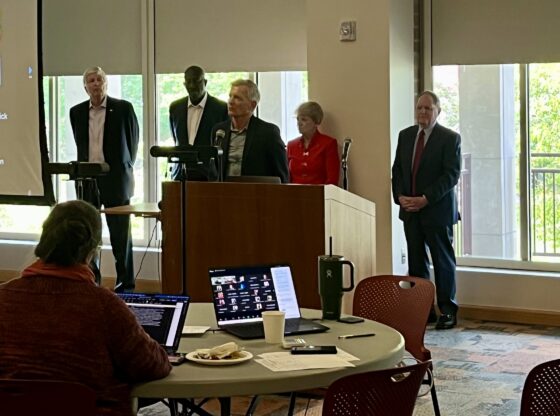Rami Nashashibi, a Chicago-based community organizer, called for students and activists to confront notions of their own “intersectionality” and “self-interest” in a speech last Friday at the Davis Auditorium.
The Royal Islamic Strategic Studies Center, in concert with Georgetown’s Prince Alwaleed Bin Talal Center for Muslim-Christian Understanding, named Nashashibi one of the 500 Most Influential Muslims in the World in 2009.
Approximately 90 students and faculty came to the event to hear Nashashibi speak.
The Center for Community Engagement and Service Learning (CCESL) sponsored the event, along with the University Chaplain’s office and AmeriCorps.
Nashashibi, dressed in a business suit and traditional Muslim “taqiyah” cap, commenced his remarks by wishing “peace and blessings” to all.
Nashashibi said the subject matter of his work and passion is community organizing. As a college student in the mid-1990s, he founded the Chicago-based Inner City Muslim Action Network (IMAN). IMAN serves Chicago’s Marquette Park, a south-side Chicago neighborhood central to the civil rights struggles of the 1960s. The organization seeks to empower individuals through Islam and help members engage in community service.
According to Nashashibi, the organization is grounded in the space and reality of the Chicago southwest side.
Nashashibi then showed the crowd a photograph of Dr. Martin Luther King Jr., taken on Aug. 5, 1966. In the picture, King was visiting Marquette Park. Nashashibi said the neighborhood’s history was an important period of Chicago’s community organizing past.
Nashashibi urged agitation, challenging people and their perceptions and misconceptions and working to transform the community. By doing this, he said, it would advance progress in the community.
“The humble recognition that America has always afforded, not always willingly, to a hard fought space – to challenge and agitate American [citizens] to live up to the unfulfilled principles in society,” Nashashibi said, adding that this lies at the heart of community organizing.
Nashashibi also showed a charted timeline of the eras of community organizing from 1940-2011. His chart covered the period of the controversial “Alinsky” method of organizing. The Alinsky method, developed by neosocialist community organizer Saul Alinsky, uses facilitators to manipulate people into forming task forces to bring about social change.
Nashashibi also said he praised the relatively modern conceptual notion of a “post-industrial ghetto neighborhood” model of organizing people and fundamentally changing their neighborhoods.
In addition, he is listed on the White House’s website as a “Champion of Change.”
In 2007, Islamica Magazine named Nashashibi one of the 10 Young Muslim Visionaries Shaping Islam in America.
Chicago Public Radio also chose him as one of the city’s Top Ten Chicago Global Visionaries in 2010.










